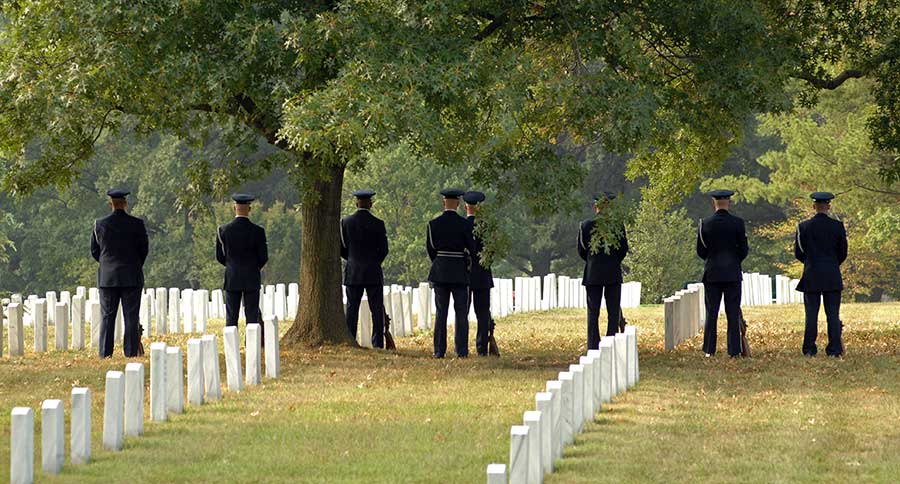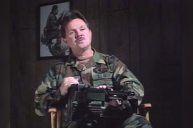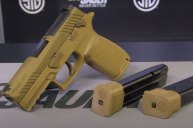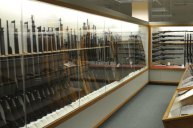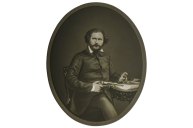Wide Open Spaces salutes all our veterans and active military members, but do you know where gun salutes got their start?
I always knew Grandpa was a veteran, and the knowledge always brought me a sense of pride, but it wasn't until his funeral that I truly understood the significance of his sacrifice to our country's Korean War efforts long before I was born.
The burial on a rainy November day was a somber occasion, but to see the Navy gun-salute Grandpa in his final resting place, play "Taps" and present the American flag to Grandma made me feel a connection to the bravest patriots throughout time.
We later collected the used shell casings that had fallen from the sky, and there were enough for all the grandchildren and other close relatives to keep one in remembrance.
It was only later that I learned the military "salute" to my grandfather was not, in fact, a 21-gun salute, but a very separate gesture.
Where did the custom come from? Who did the first salute honor? It's mystical significance had me intrigued.
Military Funerals
Military personnel who die while on active duty or in the Selected Reserve, honorably-discharged veterans and military retirees are entitled to military funerals, which consist of various honors including a flag-topped casket, the playing of "Taps," three volleys fired from rifles and the flag closing and presentation. It's the three volleys that are often confused with a 21-gun salute.
Most military funerals do not feature a 21-gun salute, but instead an honor guard team firing three volleys from rifles. Each of the fires might consist of multiple gunmen, and there might even be a total of 21 shots through three sets of seven, but the origin and meaning of the tradition is unique from other gun salutes.
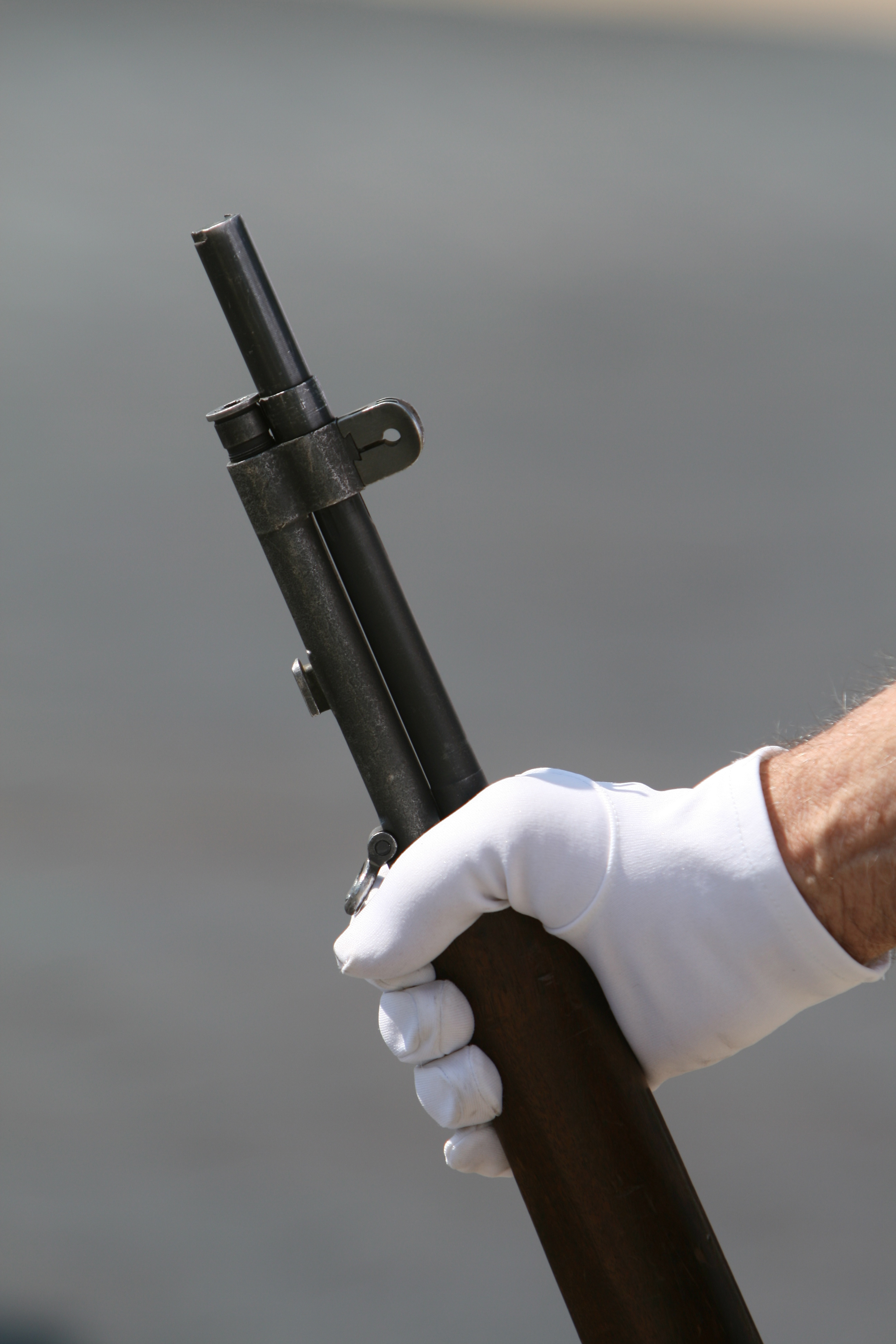
Three Volleys
The tradition of firing three volleys originated on battlefields of old, when a temporary ceasefire would be proclaimed so that each side could clear away its dead. Three volleys were fired to indicate the dead were properly cleared and cared for, and the battle could resume.
A 21-gun salute, on the other hand, is rendered in the honor of a national flag, upon the arrival or departure of the President of the United States, as well as ceremonies honoring former U.S. Presidents, any foreign chief of state of a foreign nation, and the royal family members and the President-elect of the United States.
It is also fired from U.S. military installations for a deceased president at noon of the day of the funeral, George Washington's birthday, President's Day and the Fourth of July Independence Day. Other nations have their own protocols regarding 21-gun salutes.
Gun Salutes' Origins
Military gun salutes' origins can be traced to ancient warriors who showed adversaries they came in peace by placing their weapons in a position that rendered them ineffective. For example, warriors from an African tribe might trail their spear points across the ground to indicate peaceful intentions.
It was not until the 14th Century that the use of firearms and cannons led to their use in military salutes. By the late 16th Century, warships began firing all their cannons to indicate non-hostility, since doing so rendered a cannon useless for the time it took to be reloaded. Originally, warships fired seven cannons, probably because of the number seven's occurrence in astrology and the biblical significance. Seven-gun salutes became the norm.
Land batteries, on the other hand, had access to more gunpowder and were able to fire guns more quickly than their counterparts at sea, and it soon became common to salute seven times in multiples of three, since it is also a significant number to many ancient civilizations. Soon, the 21-gun salute became the highest honor a nation could render. Eventually, thanks to a higher quality of gunpowder, salutes rendered at sea were increased to match the shore salute of twenty-one shots.
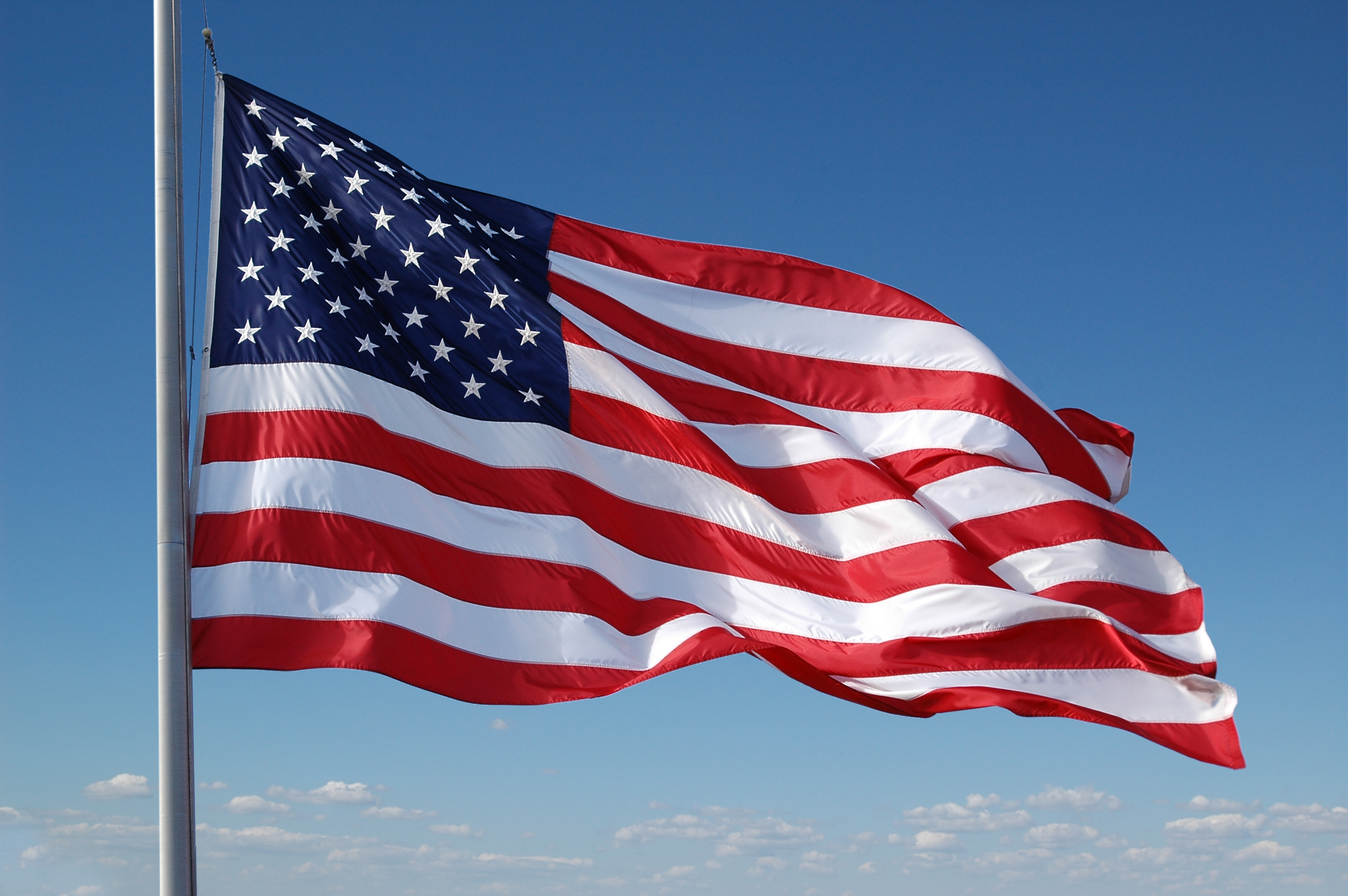
United States' Salutes
The United States was first saluted and acknowledged by another nation in November of 1775, when the West Indian port of St. Eustasius returned a nine-gun salute in response to the 13-gun salute given by John Paul Jones of the American ship Andrew Doria. It wasn't until 1810, however, that the U.S. War Department first prescribed regulations pertaining to the rendering of gun salutes, determining that number of shots be equal to the current number of states—at that time 17.
By 1818, when there were 21 states, the U.S. Navy regulated that 21 guns were required to salute the President when he visited a U.S. Navy ship. For many years, the number of guns used in the "National Salute" varied to equal the number of states at the time. The National Salute was rendered to honor the President and other heads of state, on Washington's birthday and Independence Day.
New regulations were passed in 1842, and the then-National Salute of 26 guns was officially replaced by the 21-gun salute, in accordance with the highest-honored salute used by many other nations. Even so, 50 rounds are still fired from military installations to honor Independence Day—one for each state in the Union—and is known as the "Salute to the Union."
In 1875, the United States also adopted the British tradition of firing 21 shots to acknowledge other maritime states with "salutes to be returned gun for gun."
There are several other types of firearm salutes used in the United States, as well as other nations. Just like the three volleys shot at military funerals are an entirely separate tradition, gun salutes can consist of 19, 17, 16, 13, 11, seven and even five guns, each significant in its own right and based on protocol rank.
For example, 19 guns are used to honor U.S. vice-presidents, speakers of the House, presidents of the Senate, state governors and international prime ministers, as well as other high-ranking officials such as the Head Justice of the U.S. Supreme Court. Five-gun salutes, while still honorable, are used in celebration of vice-consuls and consular agents.
Next time you hear gun saluting, try to count the number of shots. We bet it's less than 21 more often than not.
NEXT: TOP 6 SELF-DEFENSE HANDGUNS FOR WOMEN
WATCH
